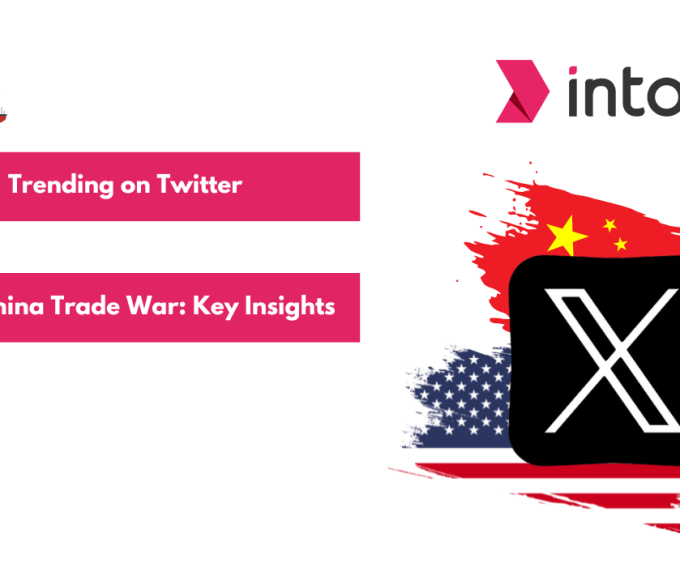The HTS code stands for Harmonized Tariff Schedule Codes. It serve as a crucial tool for businesses involved in importing and exporting goods. These codes streamline the classification process, ensuring that products are accurately identified and that appropriate tariffs are applied. Without a clear grasp of HTS Codes, companies may face delays, increased costs, and compliance issues.
The HTS Code system was developed by the World Customs Organization (WCO), an intergovernmental body that has been at the forefront of standardizing international trade practices. Established in 1952, the WCO introduced the Harmonized System (HS) in 1988, which forms the foundation for HTS Codes.
In the following sections, we will delve into the structure of HTS Codes, explore the differences between HTS and HS Codes, examine the pivotal role HTS Codes play in determining tariffs, and more. Understanding these elements will empower you to navigate global trade with confidence and precision.
The Structure of HTS Codes
Understanding the structure of HTS Codes is essential for anyone involved in global trade. The Harmonized Tariff Schedule (HTS) code system is a 10-digit classification system used to identify products in international commerce. This system enables efficient tracking and application of tariffs, ensuring that goods are correctly categorized and processed.
1. Breakdown of the 10-digit HTS Code System
The HTS code is composed of ten digits, each segment providing specific information about the product. The first six digits are derived from the Harmonized System (HS) code (also called Schedule B number), which is standardized internationally. These digits classify the product into broad categories, allowing countries to uniformly recognize the type of goods.
The remaining four digits are country-specific, allowing for further detailed classification that caters to national regulations and tariff needs.
2. The Relationship Between HS Codes and HTS Codes
The first six digits of the HTS code are universally consistent, aligning with the international HS code system. Its consistency simplifies global trade by ensuring that a product classified under a specific HS code in one country will be recognized similarly in another.
The additional four digits, however, provide a layer of detail specific to the importing country. These extra digits can denote specific product variations, subcategories, or additional regulatory requirements that are unique to that country’s tariff schedule.
This dual-layer system allows for both global standardization and national specificity, streamlining international commerce while addressing local needs.
3. Detailed Examples Illustrating the Structure of HTS Codes
To illustrate, consider the HTS code for a type of plastic tubing. The code might look like this: 3917.23.0000. Here’s the breakdown:
- 3917: The first four digits classify the product under “Plastics and articles thereof; tubes, pipes, and hoses.”
- 23: The next two digits further specify the type of plastic tubing, in this case, “tubes, pipes, and hoses, rigid.”
- 0000: The final four digits are country-specific, potentially indicating the material composition, intended use, or other specific characteristics that are relevant to national tariffs.
Another example could be an HTS code for men’s cotton shirts: 6205.20.2060. Breaking it down:
- 6205: Identifies the product category “Men’s or boys’ shirts.”
- 20: Specifies the material, in this case, “of cotton.”
- 2060: The last four digits could detail aspects like type of fabric weave, shirt style, or size, specific to the country’s tariff system.
By understanding the structure and function of HTS codes, you can ensure accurate product classification and compliance with international trade regulations.
Between HTS and HS Codes
Understanding the distinction between HTS and HS codes is crucial for businesses engaged in international trade. It ensures accurate product classification, compliance with regulations, and efficient tariff application.
1. Global Standard vs. National Specificity
HS Codes:
- Global Standard: The Harmonized System (HS) codes are internationally standardized six-digit codes used by over 200 countries to classify traded products.
- Universal Recognition: Ensures consistent product classification globally, simplifying international trade.
HTS Codes:
- National Specificity: Harmonized Tariff Schedule (HTS) codes build upon the six-digit HS codes by adding four additional digits, making a ten-digit code.
- Detailed Classification: These additional digits allow for a more precise classification, addressing specific regulatory and tariff requirements of individual countries.
2. Structure and Detail
HS Codes:
- Six Digits: Composed of six digits that classify the product into broad categories and subcategories.
- Basic Information: Provides general classification without detailed product specifics.
HTS Codes:
- Ten Digits: Extends the HS codes to ten digits, incorporating additional detail.
- Granular Detail: The extra four digits provide detailed classification relevant to national needs, such as specific product variations or regulatory requirements.
3. Role in Trade and Compliance
HS Codes:
- International Trade: Facilitates global trade by providing a common language for product classification.
- Standardization: Minimizes confusion and discrepancies in product classification across borders.
HTS Codes:
- Import Regulation: Essential for determining tariffs, duties, and regulatory compliance in the importing country.
- U.S. Example: In the United States, HTS codes are used by Customs and Border Protection (CBP) to ensure accurate tariff application and adherence to trade laws.
4. Economic and Regulatory Impact
HS Codes:
- Trade Statistics: Used for compiling international trade statistics and economic analysis.
- Simplified Trade: Helps streamline the classification process in global trade.
HTS Codes:
- Regulatory Compliance: Ensures imported goods meet specific regulatory standards, such as safety and environmental regulations.
- Detailed Economic Data: Provides detailed data for economic planning, policy-making, and analysis.
The Role of HTS Codes in Determining Tariffs
HTS codes ensure that products are classified correctly, which in turn affects the duties imposed. Understanding how HTS codes influence tariffs is essential for compliance and cost management in international trade.
1. How Tariffs are Applied Based on HTS Code Classification
Tariffs, or taxes imposed on imported goods, are directly influenced by the classification of products under the Harmonized Tariff Schedule (HTS) codes. Each product imported into a country must be classified under the appropriate HTS code, which then dictates the tariff rate applied.
Customs authorities use these codes to identify the specific product, assess its value, and determine the applicable duty rate. Accurate classification is critical; incorrect HTS code usage can lead to either overpayment or underpayment of duties, resulting in financial losses or legal penalties.
2. Types of Duty Rates
- Ad Valorem Rates: It is based on the value of the imported goods. The tariff is expressed as a percentage of the product’s total value. For example, if the ad valorem rate for a product is 10% and the product is valued at $1,000, the duty would be $100.
- Specific Rates: Unlike ad valorem rates, specific duty rates are based on a physical measure, such as weight, quantity, or volume, rather than the value of the goods. For instance, a specific rate might impose a $5 duty per kilogram of imported goods.
- Compound Rates: These combine both ad valorem and specific rates. A compound rate might impose a duty based on a percentage of the product’s value plus an additional amount based on its weight or quantity. For example, a compound rate might be 5% of the product’s value plus $2 per unit.
3. Using HTS Codes to Calculate Import Duties
To calculate import duties using HTS codes, follow these steps:
1. Identify the Correct HTS Code: Classify the imported goods under the appropriate HTS code, which provides the basis for determining the applicable duty rate.
2. Determine the Duty Rate: Based on the HTS code, refer to the country’s tariff schedule to find the specific duty rate. This will indicate whether the rate is ad valorem, specific, or compound.
3. Calculate the Duty:
- For ad valorem rates, multiply the product’s total value by the duty percentage.
- For specific rates, multiply the duty rate by the physical measure (e.g., weight or quantity) of the goods.
- For compound rates, calculate both the ad valorem and specific components and sum them up.
Example:
Consider importing a type of fabric with an HTS code classified under a compound rate tariff of 8% ad valorem plus $3 per kilogram. If the fabric’s value is $2,000 and its weight is 50 kilograms, the duty calculation would be:
- Ad Valorem Component: 8% of $2,000 = $160
- Specific Component: $3 per kg × 50 kg = $150
- Total Duty: $160 + $150 = $310
By accurately using HTS codes, importers can determine the correct duties, ensuring compliance with trade regulations and avoiding potential legal issues or financial losses.
HTS Codes vs. Schedule B Codes
Navigating the intricacies of international trade requires understanding the differences between HTS codes and Schedule B codes, both of which play crucial roles in classifying goods for imports and exports in the United States. These coding systems, while structurally similar, serve distinct purposes and are essential for ensuring compliance and accuracy in trade operations.
1. Purpose and Use
HTS Codes:
- Purpose: Harmonized Tariff Schedule (HTS) codes are primarily used for classifying imported goods into the United States.
- Use: These codes help determine the applicable tariffs, duties, and compliance requirements for imports. The U.S. International Trade Commission (USITC) maintains and updates HTS codes regularly.
Schedule B Codes:
- Purpose: Schedule B codes are used for classifying goods exported from the United States.
- Use: These codes are used by the U.S. Census Bureau to monitor and collect data on U.S. exports, contributing to trade statistics rather than tariff determination.
2. Differences in Application
HTS Codes:
- Import Focus: HTS codes are essential for anyone importing goods into the U.S. They ensure accurate duty and tariff calculation and help with compliance with U.S. import regulations.
- Detailed Classification: The additional four digits in HTS codes provide detailed product information necessary for import regulations and tariff applications.
Schedule B Codes:
- Export Focus: Schedule B codes are used by U.S. exporters to classify products for export documentation and statistical analysis.
- Statistical Monitoring: These codes are critical for the U.S. government to track export data and trade trends. They are not used for tariff calculations but are crucial for export reporting and compliance.
3. Structural and Functional Differences
Common Structure:
- Both HTS and Schedule B codes share the first six digits with the international HS codes, ensuring a uniform initial classification of products.
Unique Extensions:
- HTS Codes: The last four digits in HTS codes are specific to U.S. import regulations, providing a high level of detail for tariff and duty determination.
- Schedule B Codes: The last four digits in Schedule B codes provide additional detail specific to U.S. exports, aiding in precise product identification for export documentation.
4. Regulatory Bodies
HTS Codes:
- Managed by the U.S. International Trade Commission (USITC).
- Regular updates to reflect changes in trade regulations and product classifications.
Schedule B Codes:
- Managed by the U.S. Census Bureau.
- Primarily used for generating export statistics and monitoring trade patterns.
Common Challenges and Solutions in HTS Code Classification
Accurate HTS code classification is critical for smooth international trade operations. Misclassification can lead to severe consequences, but by implementing best practices and effective documentation, these challenges can be mitigated.
1. Potential Consequences of Incorrect HTS Code Usage
- Financial Penalties: Using incorrect HTS codes can result in underpayment or overpayment of duties. Underpayment can lead to retroactive duty assessments, fines, and penalties from customs authorities.
- Delays and Seizures: Misclassification may cause shipment delays or even seizures at the border, leading to increased lead times and potential loss of goods.
- Legal Issues: Repeated inaccuracies can lead to compliance investigations and potential legal actions against the importing company.
2. How to Document Classification Decisions for Audits
- Classification Rationale: Maintain detailed records of the rationale behind each HTS code classification. It includes descriptions of the product, relevant technical specifications, and any expert opinions or rulings consulted.
- Supporting Documents: Keep copies of product catalogs, technical data sheets, and correspondence with suppliers or customs brokers that support your classification decisions.
- Regular Reviews: Periodically review and update the documentation to reflect any changes in product specifications or HTS code updates. It ensures that the documentation remains accurate and relevant.
3. Best Practices for Managing and Updating HTS Codes on Platforms like Shopify
- Centralized Database: Use a centralized database to store all HTS codes and related documentation. It ensures consistency across all products and platforms.
- Automated Tools: Utilize automated classification tools and plugins available on platforms like Shopify to help manage and update HTS codes efficiently. These tools can reduce manual errors and streamline the classification process.
- Training and Resources: Provide regular training for staff involved in product classification to ensure they are aware of the latest HTS code updates and best practices.
- Regular Audits: Conduct regular internal audits to verify the accuracy of HTS codes and make necessary adjustments. This proactive approach helps in maintaining compliance and avoiding penalties.
Navigating HTS code classification requires vigilance and accuracy to avoid financial penalties, delays, and legal issues. By documenting classification decisions meticulously, using automated tools, and conducting regular audits, businesses can ensure compliance and streamline their international trade operations.
The Future of HTS Codes
HTS codes, fundamental to international trade, are expected to evolve significantly in response to technological advancements, future trade agreements, and ongoing updates. Understanding these potential changes can help businesses prepare for and adapt to new trade dynamics.
1. Changes in HTS Codes Due to Technological Advancements
- Automation and AI: The integration of artificial intelligence and machine learning can enhance the accuracy and efficiency of HTS code classification. Automated systems can analyze product descriptions and match them with the correct codes, reducing human error and speeding up the classification process.
- IoT and Real-Time Data: Intoglo’s AI-powered HS Code Scanner offers a cutting-edge solution for identifying HTS codes. Simply take a photo of an object, and the scanner will provide the HTS code along with the duty percentage for US exports. From your phone to a sneaker, this tool can accurately determine the HS codes for any object you click on. Discover more at Intoglo’s HS Scanner.
2. Impact of Future Trade Agreements and Green Trade Policies
Future Trade Agreements:
- New Bilateral and Multilateral Agreements: Future trade agreements may introduce new categories or subcategories in HTS codes to reflect emerging industries and products. For instance, agreements focusing on digital goods and services may require updates to the existing HTS framework.
- Tariff Adjustments: Changes in tariff structures due to new trade agreements will necessitate updates in HTS codes to ensure accurate duty assessments. It includes adjustments for preferential trade terms and new duty-free categories.
Green Trade Policies:
- Sustainability Standards: Green trade policies will likely introduce new HTS codes or modify existing ones to classify environmentally friendly products and technologies. It could include codes for renewable energy components, recycled materials, and low-emission products.
- Compliance with Environmental Regulations: HTS codes may need to be updated to reflect compliance with international environmental standards and certifications. It can help in tracking and promoting sustainable trade practices.
3. Ongoing Updates to the HTS System to Accommodate New Products
Regular Updates:
- Five-Year Reviews: The World Customs Organization (WCO) conducts comprehensive reviews of the Harmonized System every five years to incorporate new products and technologies. These reviews ensure that the HTS system remains relevant and comprehensive.
- Interim Revisions: In addition to regular updates, interim revisions may be made to address urgent classification needs for new products. This is particularly important in fast-evolving sectors like technology and pharmaceuticals.
Accommodating Emerging Industries:
- Technology and Innovation: As new technologies emerge, such as 3D printing, biotechnology, and advanced materials, the HTS codes will need to be updated to provide appropriate classifications. This ensures that new products are accurately represented in international trade.
- Global Trade Dynamics: Changes in global trade patterns, such as shifts in manufacturing hubs and the rise of new consumer markets, will also influence updates to the HTS system. This helps in capturing the economic significance of different products and industries in international trade statistics.
Conclusion
As international trade evolves with technological advancements and new trade agreements, staying updated on HTS codes and their applications is crucial for businesses to remain competitive and compliant. Intoglo’s HS Scanner can greatly assist in this regard. By simply taking an image of the product you wish to export, you can quickly determine the applicable duty percentage for that HS code, particularly for exports to the USA.
This tool ensures you have accurate and up-to-date duty information, helping you navigate international trade with ease and efficiency. For more details, visit Intoglo’s HS Scanner.
For businesses seeking reliable and comprehensive logistics solutions, Intoglo offers FCL door-to-door shipments from India to the USA with advanced AI technology to streamline the complex logistics process. Intoglo also adheres to stringent sustainability standards, promoting environmentally responsible trade practices.
Partner with Intoglo to navigate the complexities of global trade with confidence and precision while also contributing to a sustainable future.Visit Intoglo today to learn more about how their services can enhance your international shipping operations.









Leave a comment